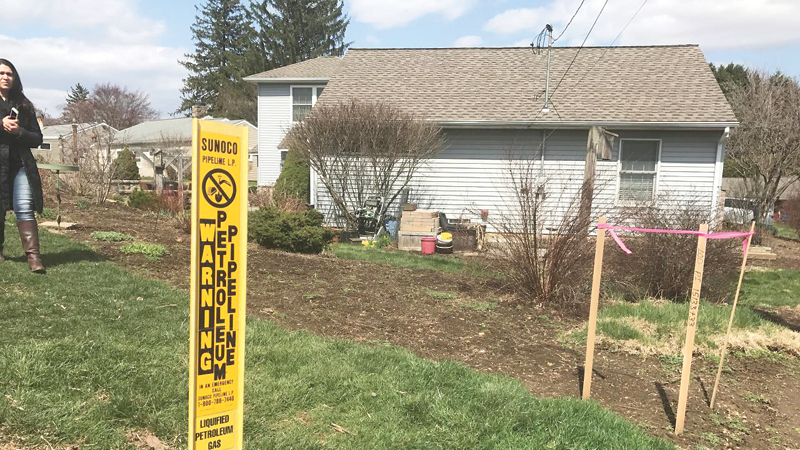

Energy Transfer LP and its Sunoco pipeline subsidiary have racked up more than 800 state and federal permit violations while racing to build two of the nation’s largest natural gas pipelines. The pipelines, known as Energy Transfer Rover and Sunoco Mariner East 2, will carry natural gas and gas liquids from Pennsylvania, Ohio and West Virginia, an area that now accounts for more than a third of US gas production.
Four comparable pipeline projects and found they averaged 19 violations each during construction.
The Rover and Mariner violations included spills of drilling fluid, a clay-and-water mixture that lubricates equipment for drilling under rivers and highways; sinkholes in backyards; and improper disposal of hazardous waste and other trash. Fines topped $15 million.
Energy Transfer also raised the ire of federal regulators by tearing down a historic house along Rover’s route.
The Appalachia region has become a hub for natural gas as it increasingly replaces coal for US power generation, creating an urgent need for new pipelines. But the recent experience of residents and regulators with the two Energy Transfer pipelines has state officials vowing to tighten laws and scrutinise future projects.
“Ohio’s negative experience with Rover has fundamentally changed how we will permit pipeline projects,” said James Lee, a spokesman for the Ohio Environmental Protection Agency.
Problems with Mariner prompted Pennsylvania legislators to craft bills tightening construction regulations, which have drawn bipartisan support.
“Any pipeline going through this area is going to face resistance which it would not have faced before,” said Pennsylvania State Senator Andy Dinniman, a Democrat.
Energy Transfer spokeswoman Alexis Daniel said the firm remained committed to safe construction and operation and at times went “above and beyond” regulations for the two projects.
Construction of the 713-mile, $4.2 billion Rover started in March 2017 and was planned to proceed at about 89 miles a month, while work on the 350-mile, $2.5 billion Mariner East 2 started in February 2017 and was planned at 50 miles a month, according to company statements on construction schedules. Both were targeted for completion late last year.
Regulators and industry experts said the pace of both projects far exceeded industry norms.
The four other projects were mostly completed at a pace averaging 17 miles per month. The projects for comparison were selected because, like Rover and Mariner, they cost more than $1.5 billion, stretched at least 150 miles and were under construction at the same time. — Reuters
Oman Observer is now on the WhatsApp channel. Click here



